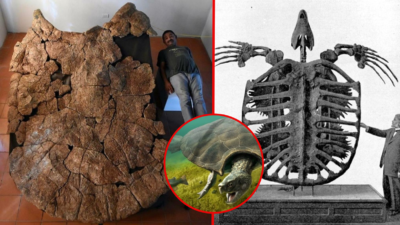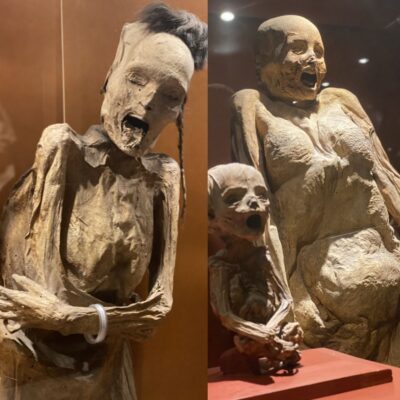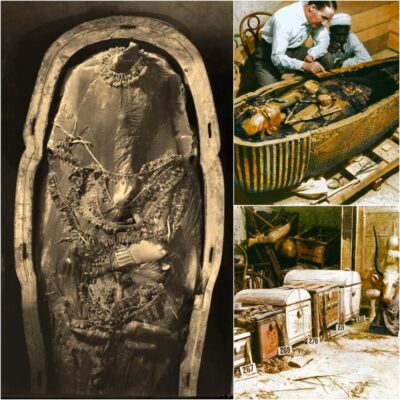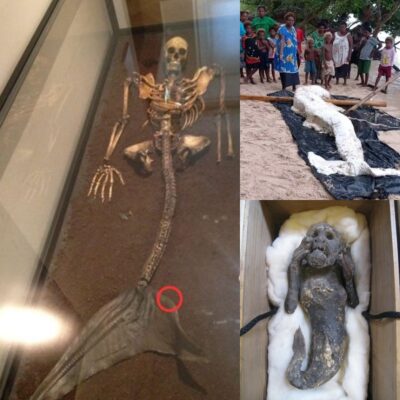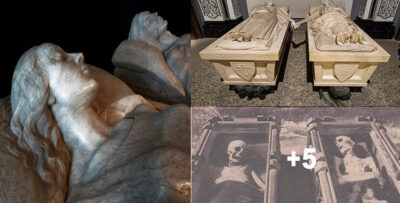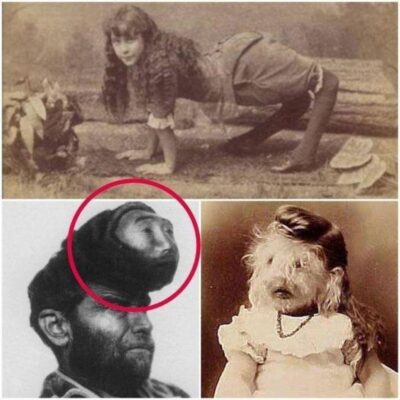All ancient Egyptian tombs are unique, but some pose a greater mystery than others.
In 1905, archaeologists excavating in the Egyptian necropolis of Deir el-Bersha discovered a hidden tomb that contained something unexpected. After 33 days of digging a 30-foot shaft, the archaeological team, led by archaeologists George Reisner and Hanford Lyman Story from the Harvard University-Boston Museum of Fine Arts Expedition, entered the 4,000-year-old Egyptian tomb, but they were unprepared for the frightening sight that awaited them. Inside the cramped limestone chamber was a beautifully painted cedar coffin, and on top of it was a mummy’s severed head.
The tomb of Djehutynakht and his wife was first excavated in 1915 by a team of archaeologists from Harvard University and Boston’s Museum of Fine Arts. It was found in the ancient Egyptian necropolis of Deir el-Bersha, close to the city of Mallawi, about 250km south of Cairo. Courtesy of Museum of Fine Arts, Boston
Riddle Of The Decapitated Egyptian Mummy
Where was the rest of the mummy? Why was only the head there? Who and why had beheaded the deceased? Decapitation was not an ancient Egyptian burial practice anyone was familiar with at the time. The researchers had encountered a mystery, and it would take 104 years before modern forensic experts could shed some light on this peculiar story.

As archaeologists continued exploring the hidden tomb’s secrets, they realized this was no ordinary burial site.
Tomb 10A was the largest burial assemblage of the Middle Kingdom (2040-1640 B.C.) ever discovered. Scientists found magnificent cedarwood coffins, personal items such as jewelry, written religious chants, and an astounding flotilla of reassembled model boats inside the chamber. As the investigation of tomb 10A continued, researchers eventually determined this was the final resting place for a governor named Djehutynakh and his wife.
“At some point during the couple’s 4,000-year-long slumber, grave robbers ransacked their burial chamber and plundered its gold and jewels. The looters tossed a headless, limbless mummified torso into a corner before attempting to set the room on fire to cover their tracks.”
The tomb contained four painted coffins, an inner and outer one for both the governor and his wife. They were made of massive planks of imported cedar. Courtesy of Museum of Fine Arts, Boston

The archaeologists felt lucky because they could recover many magnificent ancient objects that had survived the raid and sent them to the Museum of Fine Arts, Boston, in 1921.
According to the Museum of Fine Arts, Boston, tomb 10 A “contained four beautifully painted coffins, one of which (detail, shown above), the famous “Bersha coffin” (the outer coffin of the governor), is arguably the finest painted coffin Egypt produced and a masterpiece of panel painting. The tomb also included Djehutynakht’s walking sticks, pottery, canopic jar, and miniature wooden models that were made for the burial but reflect life on Djehutynakht’s estate, including some 58 model boats and nearly three dozen models of daily life such as individual shops for carpenters, weavers, brick-makers, bakers, and brewers. Of these, the best known is the exquisitely carved “Bersha procession” of a male priest leading female offering bearers.”

The outer coffin of Djehutynakht, known as the “Bersha coffin” is famous for its intricate and beautiful panel painting. The paintings and inscribed funerary texts were intended to facilitate Djehutynakht’s passage to the afterlife. Courtesy of Museum of Fine Arts, Boston
The transportation of these ancient items was dramatic because the ship caught fire. Still, fortunately, the crew had the situation under control, and the precious ancient Egyptian artifacts suffered only slight water damage.
After arriving in Boston, the Museum put the Deir el-Bersha coffin and procession on view in the galleries, but most of the other objects were not revealed to the public.

Statuettes were found within the tomb. Right: This wooden figure of a striding man is thought to be Governor Djehutynakht. Courtesy of Museum of Fine Arts, Boston – Left: A female figure was also found, thought to be Lady Djehutynakht. These funerary figurines, shawabtys, were meant to act as a substitute for the dead in the afterlife, when the gods asked them to perform menial tasks. Courtesy of Museum of Fine Arts, Boston
In 2009, the Museum of Boston decided to put the stored artifacts on display, but the staff encountered a rather embarring problem. “Though the torso remained in Egypt, the decapitated head became the star of the showcase. With its painted-on eyebrows, somber expression, and wavy brown hair peeking through its tattered bandages, the mummy’s noggin brought viewers face-to-face with a mystery.”
